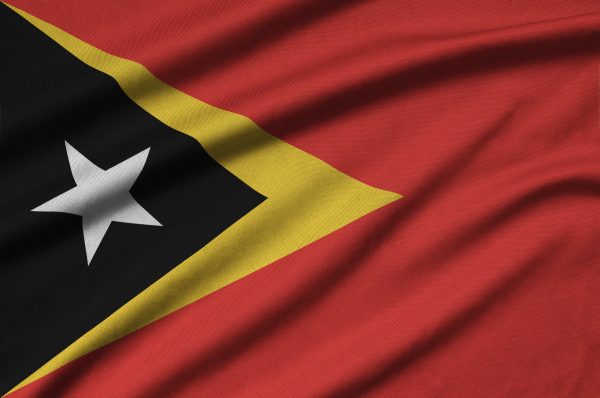The Association of Southeast Asian Nations, commonly known as ASEAN, is a political and economic regional organization made up of ten member countries located in Southeast Asia. Founded on August 8, 1967, in Bangkok, Thailand, ASEAN’s main goal is to promote economic cooperation and regional stability in Southeast Asia through various policies and programs.
ASEAN’s Ten Member States
ASEAN member states are Brunei Darussalam, Cambodia, Indonesia, Laos, Malaysia, Myanmar, the Philippines, Singapore, Thailand, and Vietnam. Southeast Asia is a diverse region with different cultural, historical, and economic backgrounds. Despite these differences, ASEAN countries come together to address common challenges and opportunities.
Brunei Darussalam: Brunei Darussalam is a small but affluent country in Southeast Asia. It is located on the north coast of the island of Borneo, bordering Malaysia’s state of Sarawak and the South China Sea.
Cambodia: Cambodia is a country located in the southern portion of the Indochina peninsula in Southeast Asia. Cambodia shares borders with Thailand to the north and west, Laos to the northeast, and Vietnam to the east and southeast.
Indonesia: Indonesia is the world’s fourth-most populous country and the largest economy in Southeast Asia. It is an archipelago made up of more than 17,000 islands, including the islands of Java, Sumatra, Sulawesi, and Bali.
Laos: Laos is a small, landlocked country located in Southeast Asia. It borders Vietnam to the east, Cambodia to the south, Thailand to the west, and Myanmar and China to the north.
Malaysia: Malaysia is a Southeast Asian country located on the Malay Peninsula and the island of Borneo. It shares land borders with Thailand, Indonesia, and Brunei Darussalam, and maritime borders with Singapore, Vietnam, and the Philippines.
Myanmar: Myanmar, also known as Burma, is a country in Southeast Asia known for its rich cultural heritage, diverse population, and natural resources. It shares land borders with Bangladesh, India, China, Laos, and Thailand.
The Philippines: The Philippines is an archipelagic country located in the western Pacific Ocean. It is made up of more than 7,000 islands, including the main island of Luzon, the Visayas, and Mindanao.
Singapore: Singapore is a small city-state and island country located in Southeast Asia. It is one of the world’s most prosperous countries and is known for its high standard of living, efficient government, and economic success.
Thailand: Thailand is a Southeast Asian country known for its beautiful beaches, diverse culture, and history. It shares borders with Laos, Myanmar, Cambodia, and Malaysia.
Vietnam: Vietnam, located on the eastern edge of the Indochinese Peninsula, is a Southeast Asian country known for its unique culture, history, and natural beauty. It shares borders with China to the north, Laos to the northwest, and Cambodia to the southwest.
ASEAN’s Policies and Programs
ASEAN has established various policies and programs aimed at promoting cooperation, economic growth, and regional stability. These policies and programs include the ASEAN Free Trade Area (AFTA), ASEAN Regional Forum (ARF), and ASEAN Economic Community (AEC).
ASEAN Free Trade Area (AFTA): The AFTA was established in 1992 to promote free trade and economic integration among ASEAN countries. This policy aims to reduce tariffs and other barriers to trade between ASEAN member states. AFTA has since expanded to include six free trade agreements with other countries, including Australia, China, India, Japan, South Korea, and New Zealand.
ASEAN Regional Forum (ARF): The ARF was established in 1994 as a way of promoting regional security and stability in Southeast Asia. The forum brings together ASEAN member states, along with other countries in the region and other major powers, to discuss regional security issues.
ASEAN Economic Community (AEC): The AEC was established in 2015 to promote economic integration among ASEAN member states. This policy aims to create a single market and production base within ASEAN, which will lead to greater economic opportunities and growth for the region.
ASEAN’s Impact on Southeast Asia
ASEAN has had a significant impact on Southeast Asia since its inception. The organization has contributed to the region’s economic growth and stability and has helped to foster closer political, economic, and cultural ties among its member states.
ASEAN has played an essential role in promoting regional peace and stability, particularly in Cambodia, Indonesia, and the Philippines, where ASEAN has helped to defuse tension and prevent conflicts. The organization also played a significant role in helping Myanmar’s transition to democracy.
ASEAN has contributed significantly to the region’s economic growth and development. The ASEAN Free Trade Area has helped to promote intra-regional trade and investment, while the AEC aims to improve the competitiveness of ASEAN businesses and promote a more integrated regional economy.
Conclusion
ASEAN has come a long way since its establishment in 1967. The organization has played a vital role in promoting regional cooperation, economic growth, and stability in Southeast Asia. With its policies and programs that aim to promote free trade, regional security, and economic integration, ASEAN has helped shape Southeast Asia into a more prosperous and peaceful region.
Disclaimer
6do Encyclopedia represents the inaugural AI-driven knowledge repository, and we cordially invite all community users to collaborate and contribute to the enhancement of its accuracy and completeness.
Should you identify any inaccuracies or discrepancies, we respectfully request that you promptly bring these to our attention. Furthermore, you are encouraged to engage in dialogue with the 6do AI chatbot for clarifications.
Please be advised that when utilizing the resources provided by 6do Encyclopedia, users must exercise due care and diligence with respect to the information contained therein. We expressly disclaim any and all legal liabilities arising from the use of such content.

















